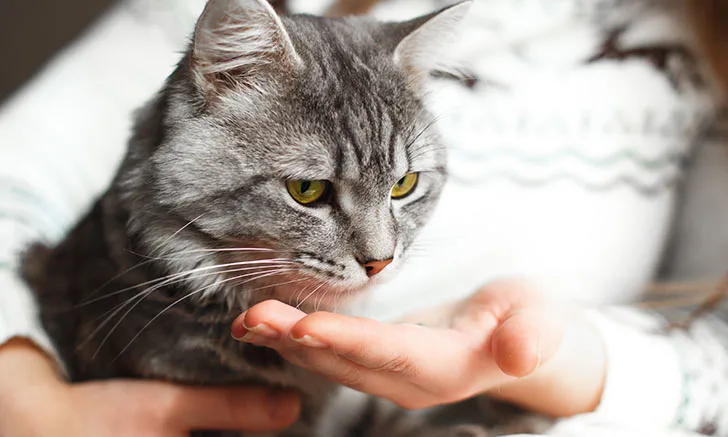Minnow’s Case: A Closer Look at Compounded Drug Options

Sponsored by Covetrus
Hyperthyroidism (ie, thyrotoxicosis) is the most common endocrine disorder in middle-aged to older cats in the United States, occurring in ≈10% of cats >10 years of age.1,2 Treatment options for hyperthyroidism include thyroidectomy, radioactive iodine therapy, medical management with methimazole or carbimazole, and dietary management using an iodine-restricted food. Methimazole tablets are the only FDA-approved medication for hyperthyroidism in cats.
Minnow’s Case
Minnow, a 13-year-old, spayed female domestic shorthair cat, was presented for her annual wellness appointment. Her owners noted that Minnow looked thinner to them despite an increased appetite, but they believed it was because she had been more active recently. When asked about litter box changes, they reported having seen loose stool and larger urine clumps in the litter boxes lately; however, they had 2 other cats in the house, so they were not sure which one was responsible.
On physical examination, Minnow had an unkempt coat, muscle wasting along the epaxial muscles, a BCS of 3/9, and palpably enlarged thyroid glands. No heart murmur was detected. Minnow was noncompliant for blood pressure measurement, and her retinal anatomy appeared normal during fundic examination.
The veterinarian suspected hyperthyroidism and recommended a CBC, serum chemistry, urinalysis, and total thyroxine (TT4) assay. CBC was normal. Serum ALT was elevated at 243 IU/L (reference range, 10-100 IU/L), and Minnow was nonazotemic. Urine was dilute, with a specific gravity of 1.022. TT4 was elevated at 8.4 mg/dL (reference range, 0.8-4.0 mg/dL). Based on these results, Minnow was diagnosed with hyperthyroidism.
The veterinarian prescribed one 2.5-mg methimazole tablet to be given by mouth twice daily, and recheck laboratory work was recommended in 3 weeks. The option of radioactive iodine therapy was also discussed, but the owner was not interested in traveling to a specialized facility and leaving Minnow there for a period of time and therefore elected medical management of hyperthyroidism.
Minnow’s Recheck
At the recheck appointment, the owner said that Minnow caught on to the pill hidden in treats after the first week and that her appetite decreased significantly while she was taking the medication. She became increasingly fractious with attempts to administer the pill, and the owner stopped medicating her 5 days prior to recheck.
Rather than rechecking laboratory work, the veterinarian discussed compounding the medication to make administration easier for the owner and less stressful for Minnow.
Compounding Solution for Minnow: Transdermal Methimazole
Because Minnow’s owner was not interested in attempting to medicate her orally, transdermal methimazole, compounded through Covetrus’ veterinary compounding services, provided a great alternative.
At her second recheck 3 weeks later, Minnow’s owner was excited by how easy the transdermal methimazole was to use. T4 was 2.1 mg/dL, and BUN and creatinine were mildly increased from initial testing but were within reference range.
Minnow’s owners requested ship to home of her compounded medication for convenience. At her first 6-month follow-up, Minnow was eating well, drinking normal amounts, and having formed stools, and she had gained weight and had a good coat quality. Her clinical signs remained well-controlled, ALT normalized, and kidney values remained stable.
Conclusion
Because methimazole is an FDA-approved medication for animal and human use, compounding of the medication for extra-label use is legal under the Animal Medicinal Drug Use Clarification Act (AMDUCA) and the Federal Food, Drug, and Cosmetic Act.3 Compounding of drugs must be based on a licensed veterinarian's prescription to meet the therapeutic needs of a specific patient when FDA-approved formulations do not, such as with Minnow. In patients like Minnow that are resistant to pilling or have side effects such as GI upset, compounding provides an alternative that allows for easier administration and may help with side effects. Veterinarians should ensure there is not an FDA-approved alterative available prior to compounding a medication.
In Minnow’s case, compounding through Covetrus offered a variety of options such as capsules, soft chews, oral liquids, and transdermal gels that could be selected to best suit Minnow’s and her owner’s needs.4
